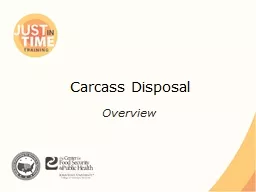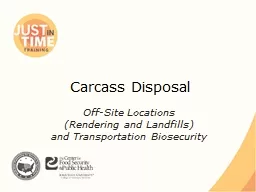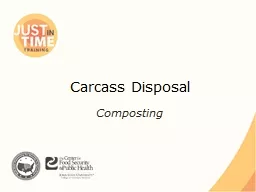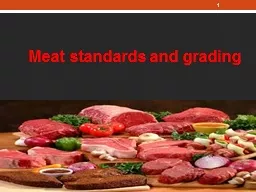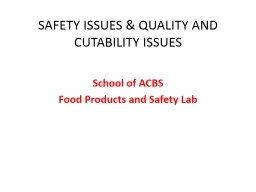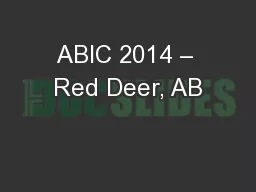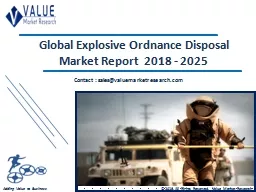PPT-Carcass Disposal
Author : conchita-marotz | Published Date : 2015-11-03
Overview Method Selection Animal species Number of animals Space and equipment needed Pathogen and its ability to persist or spread Environmental issues Soil
Presentation Embed Code
Download Presentation
Download Presentation The PPT/PDF document "Carcass Disposal" is the property of its rightful owner. Permission is granted to download and print the materials on this website for personal, non-commercial use only, and to display it on your personal computer provided you do not modify the materials and that you retain all copyright notices contained in the materials. By downloading content from our website, you accept the terms of this agreement.
Carcass Disposal: Transcript
Download Rules Of Document
"Carcass Disposal"The content belongs to its owner. You may download and print it for personal use, without modification, and keep all copyright notices. By downloading, you agree to these terms.
Related Documents

